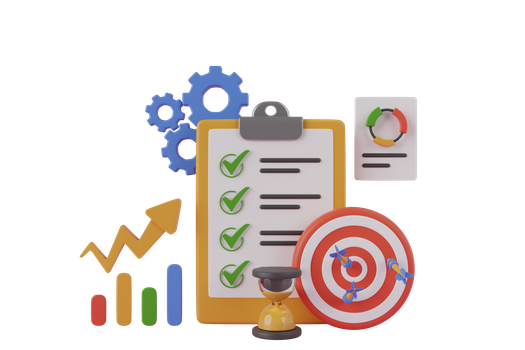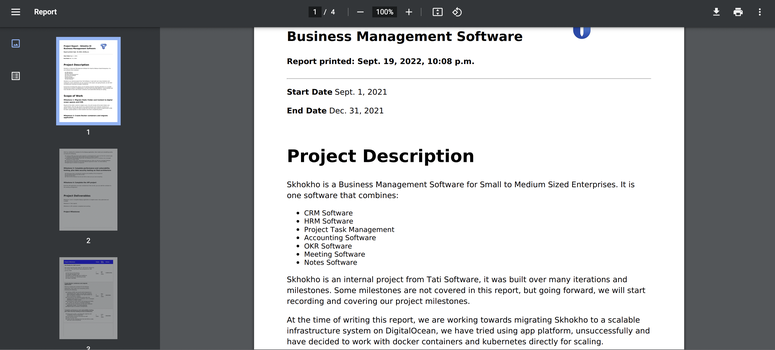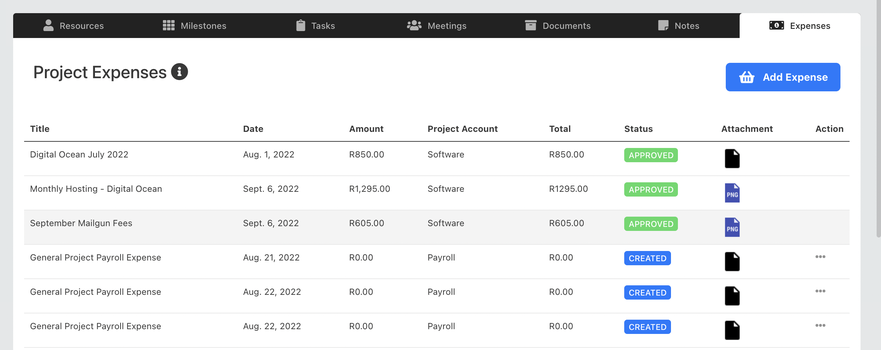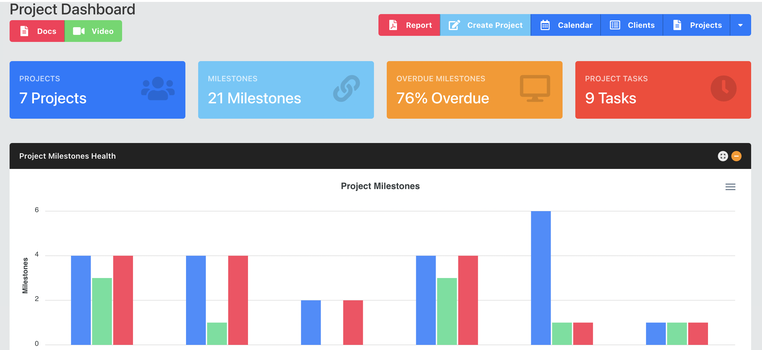Project Cost Control and Project Management: Steps, Basics and Benefits
In this article we are going to discuss project cost control and project management. We will go over the steps, basics and benefits of these two topics. Project cost control is important for any organization as it helps to keep track of expenses and keep the project within budget.
Project management is also important as it helps to ensure that the project is completed on time and within scope. By understanding the steps, basics and benefits of these two topics, you will be able to better manage your projects and control costs.

We will cover the following topics:
- Project Cost Control: The Basics
- The Benefits of Project Cost Control
- Benefits of an Integrated Project Management and Cost Control Software System
- Steps for Controlling Project Costs
- Budgeting for Your Project: Tips and Tricks
- Cost-Saving Tips for Project Managers
Project Cost Control: The Basics
Project cost control is the process of monitoring and regulating the costs incurred during a project. It is an important part of project management, as it helps to keep the project within its budget.
There are several different roles involved in project cost control, including the project manager, the project cost controller, and the project accountant.
The project manager is responsible for ensuring that the project stays within its budget. They will work with the project cost controller to monitor and regulate the project's costs.

The project cost controller is responsible for keeping track of the project's costs and ensuring that they are within the budget. They will report to the project manager on a regular basis to update them on the project's progress.
The project accountant is responsible for maintaining the financial records of the project. They will work with the project manager and the project cost controller to ensure that all of the project's costs are accounted for.
The basics of project cost control include setting a budget for the project, monitoring the project's costs, and regulating the project's costs. By following these basics, you can help to ensure that your project stays on track and within its budget.
Project Cost Management: The Benefits of Project Cost Control
There are many benefits to project cost control. Perhaps most importantly, it can help prevent a project from going over budget. This is critical, as going over budget can jeopardize the success of the project.
Cost control can also help ensure that the project stays on schedule, as it can help identify and address potential cost overruns early on.

In addition, project cost control can improve communication between the project manager and the project team. By monitoring spending and sharing information on where the project stands in terms of its budget, the project manager can keep the team up-to-date on the project's progress and ensure that everyone is on the same page. This can help avoid misunderstandings and disagreements down the line.
Overall, cost control is a vital part of successful project management. By keeping a close eye on spending and taking corrective action when necessary, project managers can help ensure that their projects stay on track and within budget. This, in turn, can help increase the chances of project success.
Benefits of an Integrated Project Management and Cost Control Software
As a project manager, you are responsible for delivering your project on time, within budget, and to the required quality standards. An integrated project management and cost control software system like Skhokho can help you to achieve this by providing a central place to track your project deliverables and cost control.
Skhokho Project Management Software can help you to keep better track of your project deliverables and cost control in one place. This is because all of the information is stored in a central database, which can be accessed by all members of the project team. This means that everyone is aware of the project objectives and the progress that has been made.

Another benefit of using Skhokho is that it can help you to identify potential problems early on. For example, if you are using a spreadsheet to track your project deliverables, you may not be able to see if there is a problem with the way that the data is entered. However, if you are using a software system, you will be able to see if there are any errors in the data. This means that you can fix the problem before it becomes a larger issue.
If you are looking for a project management and cost control software system, then you should consider using Skhokho integrated system. In addition to tracking your project deliverables and cost - the software is integrated to Skhokho accounting, which allows you to:
- Manage employee timesheets - allowing employees to book time to specific project tasks
- Immediately create project invoices based on approved timesheets and email to the client
- Track client lifetime value - costs, invoices and quotes
- Supply your project management clients with a client portal, where they can also keep track of project progress at their convenience
Project Budget: Steps for Controlling Project Costs
When it comes to controlling project costs, there are a few key steps that both the cost controller and project manager need to follow:
Step 1: Establish a clear and Concise budget for the project
Creating a clear and concise budget is the foundational step to effective project cost control. The project manager needs to plan effectively and anticipate all the costs involved in the project. This should include the following budget items: (1) Raw materials, (2) marketing and advertising costs, (3) man-hours - the cost of individuals working on the project, (4) travelling costs, (5) administration overheads, (6) training and development and (7) any other expense associated with the project.
The more comprehensive the budget, the better. The budget should be documented and communicated to the entire project team, clients and all involved stakeholders. All the parties involved should understand the role that they play in the project and how that is costed.
Step 2: Create a project execution plan
Create a plan describing how the project will be executed, this plan should involve the project cost control strategy.

This will be a living document that is updated as the project progresses. The execution plan should outline the following:
(1) Who is responsible for what tasks?
(2) When tasks need to be completed by?
(3) What tasks need to be completed?
(4) What is the budget for each task?
(5) What is the cost baseline for the project?
(6) How will progress and costs be monitored?
(7) What are the thresholds for project escalation?
Step 3: Monitor project progress and costs regularly
Project cost control is an ongoing process that needs to be monitored regularly. The project manager should establish a system to track project progress and costs. This system should be updated regularly, at least on a weekly basis. The project manager should also hold regular meetings with the project team to review progress and costs.
Step 4: Take corrective action when necessary
If the project is not progressing as planned or costs are exceeding the budget, the project manager needs to take corrective action. This may involve changing the project plan, re-allocating resources or re-negotiating contracts. The important thing is to take action quickly to get the project back on track.
Budgeting for Your Project: Tips and Tricks
When it comes to project cost control and management, there are a few key tips and tricks to keep in mind. Here are a few to get you started:
1. Know your project inside and out. This includes understanding all the tasks that need to be completed, the resources required, and the timeline for completion. Without this level of understanding, it will be difficult to create an accurate budget.

2. Make use of project management software. This software can be a big help in creating and tracking your budget.
3. Don’t be afraid to ask for help. If you’re not sure how to create a budget or you need help tracking costs, don’t be afraid to ask for help from a professional.
Following these tips can help you get started on creating a budget for your next project. Remember, every project is different so it’s important to tailor your budget to fit your specific needs.
Cost-Saving Tips for Project Managers
As a project manager, it’s important to keep a close eye on your project budget. Here are some tips to help you save money and keep your project on track:
1. Define the scope of your project.
Before you start working on your project, take some time to clearly define the scope. What are the objectives of the project? What are the deliverables? Once you have a clear understanding of the scope, you can start defining the budget.

Skhokho provides a template for creating a project scope document that will help any project manager answer all the relevant questions and clearly understand their project scope.
2. Set a realistic budget.
Once you have defined the scope of your project, it’s time to set a realistic budget. Make sure to include all the necessary costs in your budget, such as materials, labor, overhead, and contingency.

With Skhokho you can define the (1) Tasks required to complete the project and assign resources and time to those tasks - this helps you understand the man-hour cost associated with your project and (2) The project accounts - which will hold all the expenses and income.
3. Track your expenses.
As your project progresses, keep track of all your expenses. This will help you stay on budget and identify any cost overruns early on.

You can create project expenses on the go against project accounts on Skhokho very easily, and keep track of each project cost account in one place.
4. Communicate with your team.
Make sure to keep your team updated on the budget and any changes that are made. This will help everyone stay on the same page and avoid any surprises down the road.

With Skhokho project management software, your entire project team has access to the right information in real-time. It allows for project collaborations and team work- even if you have remote team members. All one needs to do is to log in to their profile and they will be able to see the latest project status.
5. Review your budget regularly.
As your project progresses, review your budget regularly. This will help you identify any potential cost savings opportunities.
Skhokho produces regular project management and cost reports to help you review your project progress, cost performance and cost on a regular basis.
Get started with Skhokho Cost Management Today
You can get started with a 14 day free trial today and test out Skhokho with no strings attached today.









